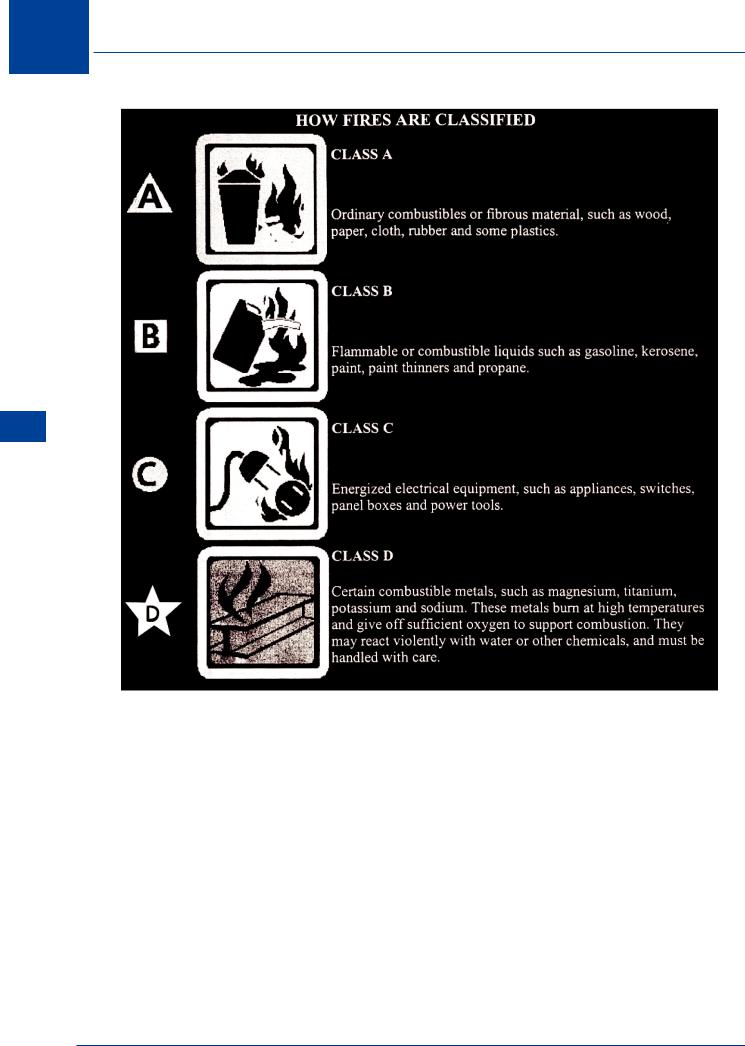
- •Textbook Series
- •Contents
- •Introduction
- •1 ICAO Annex 6
- •Introduction
- •Compliance with the Law
- •Operational Control
- •Safety
- •Alternate Aerodromes
- •Flight time
- •Flight Safety and Accident Prevention
- •Maintenance Release
- •Lighting of Aircraft
- •Navigation Lights
- •Questions
- •Answers
- •2 EU-OPS General Requirements
- •Applicability
- •Common Language
- •Quality System
- •Accident Prevention and Flight Safety Programme
- •Additional Crew Members
- •Ditching
- •Carriage of Persons
- •Crew Responsibilities
- •Responsibilities of the Commander
- •Authority of the Commander
- •Admission to the Flight Deck
- •Unauthorized Carriage
- •Portable Electronic Devices
- •Drugs and Alcohol
- •Endangering Safety
- •Documents to Be Carried
- •Manuals to Be Carried
- •Additional Information and Forms to Be Carried
- •Information to Be Retained on the Ground
- •Power to Inspect
- •Production and Preservation of Documents and Recordings
- •Leasing of Aeroplanes
- •Questions
- •Answers
- •3 Operator Supervision and Certification
- •Rules for the Certification of an Air Operator
- •Applicant Requirements
- •Aeroplane Maintenance
- •Variation, Revocation or Suspension of an AOC
- •Key Post Holders within the Operation
- •Main Operating Base
- •Aeroplanes
- •Other Considerations
- •Contents and Conditions of an AOC
- •Terminology
- •Operations Manual (OM)
- •General Rules for Operations Manuals
- •Ops Manual Amendments
- •Competence of Operations Personnel
- •Aeroplane Maintenance
- •Questions
- •Answers
- •4 Operational Procedures
- •Establishment of Procedures
- •Use of Air Traffic Control
- •Authorization and Selection of Aerodromes by the Operator
- •Meteorological Conditions
- •Approach and Landing Conditions
- •Aerodrome Operating Minima (AOM)
- •Commencement and Continuation of Approach
- •Instrument Departure and Approach Procedures
- •Noise Abatement Procedures
- •Routes and Areas of Operation
- •RVSM Operations
- •Operations in MNPS Airspace
- •Maximum Distance from an Adequate Aerodrome for Two-engine Aeroplanes without an ETOPS Approval
- •Extended Range Operations with Twin-engine Aeroplanes (ETOPS)
- •Establishment of Minimum Flight Altitudes
- •Fuel Policy
- •Carriage of Persons with Reduced Mobility (PRMs)
- •Carriage of Inadmissible Passengers, Deportees or Persons in Custody
- •Stowage of Baggage and Cargo and Galley Equipment
- •Passenger Seating
- •Passenger Briefing
- •Flight Preparation
- •ATS Flight Plan
- •Refuelling and De-fuelling
- •Crew Members at Duty Stations
- •Seats, Safety Belts and Harnesses
- •Smoking
- •Ice and Other Contaminants
- •Use of Supplemental Oxygen
- •Ground Proximity Detection
- •Occurrence Reporting
- •Questions
- •Answers
- •5 All Weather Operations
- •Introduction
- •Aerodrome Operating Minima: Operator’s Responsibility
- •Classification of Aeroplanes
- •Terminology
- •Take-off Minima
- •Visual Reference
- •Required RVR/Visibility
- •Figure 5.2 Exceptions
- •System Minima
- •Non-precision Approach
- •Minimum Descent Height
- •Visual Reference
- •Required RVR
- •No Decision Height Operations
- •Visual Reference
- •Category III RVR Requirements
- •Circling
- •Visual Approach
- •VFR Operating Minima
- •Special VFR
- •Questions
- •Answers
- •6 Aeroplane Equipment and Instruments
- •Introduction
- •Basic Requirements
- •Internal Doors and Curtains
- •First Aid Kits
- •First Aid Oxygen
- •Break-in Markings
- •Means of Emergency Evacuation
- •Cockpit Voice Recorders (CVRs)
- •Summary
- •CVRs – Operation, Construction and Installation
- •Flight Data Recorders (FDRs)
- •Summary
- •Equipment for Compliance with Flight Rules
- •Single-pilot IFR Operations
- •Altitude Alerting System
- •Standby Horizon
- •Aeroplane Lighting
- •Flights over Water
- •Long Range Flights
- •Weather Radar
- •Equipment for Operations in Icing Conditions
- •Machmeter
- •ACAS
- •Communications Equipment
- •Internal Communications
- •Audio Selector Panel (ASP)
- •Navigation Equipment
- •Instrument Procedures
- •Installation
- •Electrical Circuit Fusing
- •Windshield Wipers
- •Items not Requiring Approval
- •Seats and Harnesses
- •‘Fasten Seat Belts’ and ‘No Smoking’ Signs
- •Carriage and Use of Supplemental Oxygen
- •Crew Protective Breathing Equipment (PBE)
- •Crash Axes and Crowbars
- •Megaphones
- •Emergency Lighting
- •Emergency Locator Transmitter (ELT)
- •Survival Equipment
- •Questions
- •Answers
- •7 Crew, Logs and Records
- •Crew Composition
- •Commander
- •Relief of the Commander
- •Relief of the Co-pilot
- •System Panel Operator
- •Relief of System Panel Operator
- •Minimum Flight Crew for Operations under IFR or at Night
- •Conversion, Training and Checking
- •Type Rating
- •Conversion Training
- •Difference and Familiarization Training
- •Recurrent Training and Checking
- •Operator Proficiency Check
- •Line Checks
- •Emergency and Safety Equipment Training and Checking
- •Crew Resource Management (CRM) Training
- •Ground and Refresher Training
- •Aeroplane/STD Training
- •Pilot Qualifications to Operate in Either Pilot Seat
- •Recent Experience
- •Route and Aerodrome Qualification for Commander or PF
- •Operations on More Than One Type or Variant
- •Operation of Aeroplanes and Helicopters
- •Training Records
- •Cabin Crew
- •Journey Log
- •Operational Flight Plan (OFP)
- •Storage Periods
- •Flight and Duty Time Limitations
- •Questions
- •Answers
- •8 Long Range Flight and Polar Navigation
- •Navigation System Degradation
- •Course and INS Cross-checking
- •Unable to Continue in Accordance with ATC Clearance
- •Polar Navigation
- •Grid Navigation
- •Minimum Time Routes
- •Questions
- •Answers.
- •Introduction
- •Considerations
- •References
- •Transoceanic Navigation Problems
- •The Airspace
- •MNPS Authority
- •RVSM
- •Navigation System Requirements
- •Navigation System Serviceability
- •NAT Tracks
- •OTS Track Designation
- •OTS Changeover
- •Track Message Identifier (TMI)
- •Track Routings
- •Allocation of FLs
- •Domestic Routes
- •Polar Track Structure (PTS)
- •Other Routes within NAT MNPS Airspace
- •Route Structures Adjacent to NAT MNPS Airspace
- •Brest Oceanic Transition Area (BOTA)
- •Communications
- •SELCAL
- •Position Reports
- •Radio Failure in the North Atlantic Area
- •Initial Clearance
- •Transition
- •Meteorological Reports
- •Special Contingencies and Procedures
- •Strategic Lateral Offset Procedure (SLOP)
- •Deviation Around Severe Weather
- •Unable to Obtain Revised Clearance
- •Navigation System Failure
- •Errors Associated with Oceanic Clearances
- •Pre-flight and In-flight Procedures
- •Questions
- •Answers.
- •10 Special Operational Procedures and Hazards
- •Operating Procedures
- •Minimum Equipment List (MEL) and Master Minimum Equipment List (MMEL)
- •Ground De-icing and Anti-icing Procedures
- •The Clean Aircraft Concept
- •Bird Strike Risk and Avoidance
- •Hazard to Aeroplanes
- •Bird Strike Report
- •Incompatible Land Use around Airports
- •Noise Abatement
- •Questions
- •Answers
- •11 Fire and Smoke
- •Fire and Smoke
- •Fire in the Aeroplane
- •The Number and Location of Hand-held Fire Extinguishers
- •Smoke
- •Crew Protective Breathing Equipment (PBE)
- •Crash Axes and Crowbars
- •Overheated Brakes
- •Questions
- •Answers
- •12 Pressurization Failure
- •Pressurization Failure
- •Questions
- •Answers
- •13 Windshear and Microburst
- •Windshear and Microburst
- •Questions
- •Answers
- •14 Wake Turbulence
- •Wake Turbulence
- •Questions
- •Answers
- •15 Security
- •Security
- •Questions
- •Answers
- •16 Emergency and Precautionary Landings
- •Emergency and Precautionary Landings
- •Ditching
- •Precautionary Landing
- •Passenger Briefing
- •Evacuation
- •Megaphones
- •Questions
- •Answers
- •17 Fuel Jettison
- •Fuel Jettison
- •Jettison System Certification Requirement
- •Jettisoning Procedure
- •Safety
- •Questions
- •Answers
- •18 Transport of Dangerous Goods by Air
- •Transport of Dangerous Goods by Air
- •Technical Instructions
- •Labelling and Packaging
- •Loading Restrictions
- •Provision of Information
- •Emergencies
- •Training
- •Accident and Incident Reporting
- •Acceptance of Dangerous Goods
- •Inspection for Damage, Leakage or Contamination
- •Labelling
- •Questions
- •Answers
- •19 Contaminated Runways
- •Contaminated Runways
- •Contaminated Runway
- •Damp Runway
- •Wet Runway
- •Dry Runway
- •Contaminant Depth Limitations
- •Aquaplaning (Hydroplaning)
- •Braking Action
- •Coefficient of Friction
- •Performance Considerations
- •SNOWTAMs
- •Questions
- •Answers
- •20 Revision Questions
- •Questions
- •Answers
- •21 Index

11 Fire and Smoke
Smoke and Fire 11
Figure 11.2
Smoke
The effects of smoke are reduced visibility and physiological changes to people. The physiological changes include the effects of irritation to the eyes, irritation to the air-ways, over stimulation of the nasal passages and irritation to the lungs. In dense smoke the rate of oxygen absorption in the lungs is reduced resulting in hypoxia after prolonged exposure leading to asphyxiation and death.
Smoke in the cockpit is an obvious flight safety hazard in that it will divert the attention of the pilot(s) from flying the aeroplane to combatting the source of the smoke. Training drills are the best method of dealing with this particular hazard but the success of any such drill relies on total crew co-operation.
In order to combat the effects of smoke in the cockpit, smoke hoods are provided, or the supplementary oxygen mask is designed to provide protection from smoke ingress. Specific drills will be detailed in the OM and will be type dependent.
162

Fire and Smoke 11
Smoke in the passenger cabin and toilets can be caused by an engineering associated fire or by the actions of passengers. In particular the careless extinguishing of smoking material or the practice of illegal smoking in toilet areas in aeroplanes in which smoking is prohibited. Again the drills associated with combatting smoke in the cabin will be detailed in the operations manual and will centre on the control of the situation by the cabin staff not directly involved in fighting the fire or locating the source of the smoke.
Smoke will cause panic in passengers and the aversion to covering the mouth and nose by a drop out oxygen mask in the untrained, needs to be firmly handled. Reassurance is the best method calming upset passengers and the commander should keep the passengers fully informed. Ignorance breeds panic! Again, training through realistic drills is essential.
Smoke or fire in a cargo compartment needs to be combatted according to the accessibility of the cargo compartment whilst the aeroplane is airborne. There are five categories of cargo compartment in this respect:
• Class A
Smoke/fire easily detectable by a crew member at his/her station and each compartment easily accessible.
• Class B
A separate approved smoke/fire detection system giving warning at the Engineer/Pilot station, adequate access in flight and the containment of any extinguishing agent in the cargo compartment.
• Class C
A situation not meeting A or B above, but where a separate detection system exists, a remote controlled/automatic extinguisher system exists, a method of excluding smoke, fire and extinguishing agent from the cabin exists, and means of controlling ventilation/draughts in the cargo compartment exist.
• Class D
No longer cleared for passenger aircraft.
• Class E
(Cargo aeroplanes only). A separate approved smoke/fire detection system giving warning at the Engineer/Pilot station; means of shutting off the airflow exists without affecting the flight deck; means exists to exclude smoke, flames and noxious gasses from the flight deck; and crew emergency exits are accessible under all loading conditions.
The subsequent actions associated with any fire or instance of smoke in an aeroplane will be defined in the OM.
Crew Protective Breathing Equipment (PBE)
Un-pressurized aeroplanes with a MTOM greater than 5700 kg, or with more than 19 passenger seats, and all pressurized aeroplanes, must carry equipment which protects the eyes, nose and mouth of each flight crew member whilst on flight crew duty and provide oxygen for a period of at least 15 minutes. The oxygen supply may be from the supplemental supply as required by EU-OPS 1.770. Sufficient PBE must also be carried for each cabin crew member stowed at the cabin crew member station. Additionally, one set of PBE is to be stowed at or adjacent to the stowage of the hand-held extinguishers. Where a fire is possible in the cargo area, the PBE is to be stowed outside the area but adjacent to the entrance. Whilst using PBE, normal communications must not be prevented.
Fire and Smoke 11
163

11 Fire and Smoke
Crash Axes and Crowbars
Aeroplanes with a maximum take-off mass exceeding 5700 kg or having a passenger seating configuration of more than nine, are to be equipped with a crash axe or crowbar located on the flight deck. Aeroplanes with a passenger seating configuration of more than 200 are required to carry an additional crash axe or crowbar stowed in the rearmost galley area. Axes or crowbars stowed in the passenger cabin are not to be visible to the passengers.
Smoke and Fire 11
Overheated Brakes
The heating effect of the aircraft braking system is a factor of the mass of the aircraft and the rate of deceleration required. Where such braking is abnormal (abandoned take-off at maximum take-off mass, turn back after take-off or landing on a short runway) excessive heating of the brake system (brake units at the wheels) may result in brake fires or inadequate dispersal of generated heat. Brake packs continue to heat, and reach their maximum temperature, up to 30 minutes after their use. This may cause tyres to ignite or explode, welding of brake components (seizing) and, greatly reduced braking action both during the period of hard barking and during taxiing after reducing to safe speed. It is therefore essential that other speed reducing methods are maintained (do not shut down engines that could provide reverse thrust). Due to the nature of the construction of braking systems, the components remain critically hot for considerable periods and the possibility of fires only reduces slowly. Calculate and wait for the expiry of brake cooling time before attempting a subsequent take-off. It is essential where hot brakes are concerned, that fire prevention/fighting personnel/equipment are/is in attendance and if taxiing the aircraft that a fire truck follows. Maintain two-way communications with the fire crew directly or via air traffic. Give consideration to where the aircraft is to be parked (proximity of other aircraft, buildings, refuelling points) and the possibility of an emergency evacuation of the passengers.
164

Questions
Questions
1.The correct actions to be taken in the event of a carburettor fire on a piston engined aeroplane depend upon:
a.the type of fuel.
b.whether the engine has started.
c.the OAT.
d.the accessibility of a fire extinguisher.
2.The initial actions to be taken in the event of an engine fire depend upon:
a.the type of engine.
b.whether the aeroplane is in the air or on the ground.
c.how many passengers are on board.
d.the availability of crash/fire crews.
3.What equipment is required to be carried to combat the effects of smoke in the flight deck area?
a.Fire extinguishers.
b.A drop out oxygen system.
c.Smoke hoods with emergency 100% oxygen supply.
d.Battery operated torches.
4.Would you use a dry powder extinguisher on a liquid fire in an aeroplane?
a.Yes, but not on the flight deck.
b.No, it is only for use on electrical fires.
c.Yes anywhere.
d.Yes, but only in confined spaces not accessible to passengers.
5.Fire detection equipment fitted to aeroplanes is designed to:
a.detect fire and smoke by optical means.
b.detect heat by electrical means and smoke by optical means.
c.operate sprinkler systems.
d.operate fire alarms and automatically operate CO2 flooding of inaccessible spaces.
6.If an aeroplane is certificated for 6 passengers, how many hand-held fire extinguishers are required to be carried in the aeroplane?
a.1.
b.Nil.
c.2.
d.It depends upon the max take-off mass permitted.
7.If an aeroplane is certificated for 10 passengers, how many hand-held fire extinguishers are required to be carried in the passenger compartment?
a.1
b.2
c.3
d.4
11
Questions 11
165

11 Questions
Questions 11
8.If the galley is not located on the main passenger deck:
a.the closest extinguisher in the passenger compartment must be not more than 10 metres from the galley.
b.the galley must have an automatic extinguisher system and fire detection system.
c.separate extinguishers suitable for both oil and solid fires are to be available in the galley.
d.at least one extinguisher is to be positioned in the galley.
9.A crash axe and/or crowbar is/are required to be carried on the flight deck of aeroplanes:
a.in the public transport (passenger) role.
b.with a max take-off mass exceeding 5700 kg or 10 or more passenger seats.
c.with a max take-off mass of 5700 kg and 9 passenger seats.
d.that are carrying more than 200 passengers.
10.Which combination of the following statements correctly identifies the problems associated with overheated brakes after a heavyweight landing or an aborted takeoff?
1.Reduced braking efficiency.
2.Inadvertent operation of fire extinguishers.
3.Extended brake cooling time.
4.Inadvertent operation of brake overheat sensors.
5.Problems with heat dispersal.
6.Risk of tyre explosion.
a.1, 2, 3, 5 and 6.
b.All.
c.1, 3, 5 and 6.
d.2, 3, 4 and 5.
166

Questions 11
Questions 11
167
